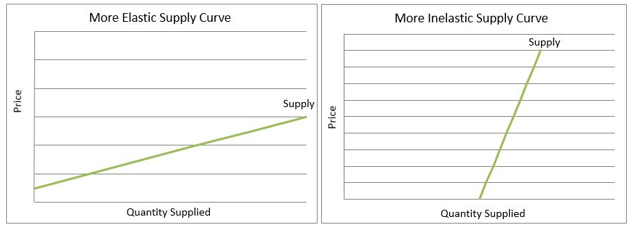The mathematical formula for the elasticity of supply is:


Time: Long-term supply curves are more elastic than short-term curves because of the flexibility that time provides to respond to market changes. For example, assume a community experiences a sudden rent increase. The increase may not generate an immediate increase in housing. Up-fitting apartments in homes and building apartments take time.
Availability of Inputs: If a company needs to search or wait for inputs, its supply is more inelastic than a company with the inputs readily available. For example, compare a lawn mowing service with a hospital. The lawn mowing company could hire additional workers in a few weeks since the work requires little skill. A hospital may take months to identify and negotiate with a highly qualified surgeon. In this case, the lawn mowing company has a more elastic supply curve than the hospital.
Ease of Storage: Some companies can increase their elasticity of supply by stockpiling parts or the final product so they can respond quickly to a price increase. Other companies do not have that flexibility. Producers that manufacture a good that is perishable or has an input that has a short shelf life are unable to store their final product or inventory parts as readily as other companies.
Capacity: A company with excess capacity has a more elastic supply curve than a company that is producing at capacity because it is much easier for the company with excess capacity to increase output. A company operating near capacity may need to hire more workers or purchase additional equipment to increase production.